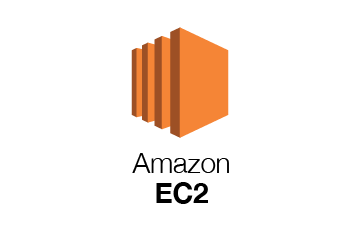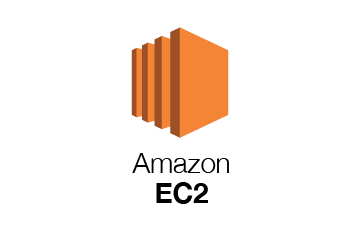1. What are the different service models offered by cloud computing?
The three different service are:
Infrastructure as a Service (IaaS)
Platform as a Service (PaaS)
Software as a Service (SaaS)
2. What are the different deployment models for Cloud?
The different models are:
Private Cloud
Public Cloud
Hybrid Cloud
3. What are the different layers which define cloud architecture?
There are five layers which define the cloud architecture:
Cloud Controller (CLC)
Walrus
Cluster Controller
Storage Controller (SC)
Node Controller (NC)
4. What uses do API’s have in cloud services?
Application Programming Interface (API) has the following uses:
It eliminates the need to write full fledged programs.
It enables communication between one or more applications.
It allows linking of the cloud services with other systems.
For Example: if you would want to connect CloudWatch to OpenGenie, you will be doing that using the OpenGenie API.
5. What is Amazon EC2 service?
Amazon describes Elastic Compute Cloud (Amazon EC2) as a web service that provides resizable compute capacity in the cloud. They are re-sizable because you can quickly scale up or scale down the number of server instances you are using if your computing requirements change.
6. What are the functions of Amazon Elastic Compute Cloud?
From the definition, we can see that EC2 is “resizable” and provides “compute capacity”. Keeping that in mind let’s elaborate on the functions:
It provides compute capacity in the cloud meaning, EC2 gives the user complete control of his compute resources in Amazon’s infrastructure, therefore he can run them according to his requirement.
It is resizable meaning, the user can set parameters on his resources to scale up and scale down as and when required.
It also provides varieties of tools to the developers to build failure resilient applications like Multi AZ deployment.
7. Explain Stopping, Starting, and Terminating an Amazon EC2 instance?
Starting, stopping and terminating are the three states in an EC2 instance, let’s discuss them in detail:
Stopping and Starting an instance: When an instance is stopped, the instance performs a normal shutdown and then transitions to a stopped state. All of its Amazon EBS volumes remain attached, and you can start the instance again at a later time. You are not charged for additional instance hours while the instance is in a stopped state.
Terminating an instance: When an instance is terminated, the instance performs a normal shutdown, then the attached Amazon EBS volumes are deleted unless the volume’s deleteOnTermination attribute is set to false. The instance itself is also deleted, and you can’t start the instance again at a later time.
8. How is a Spot instance different from an On-Demand instance or Reserved Instance?
First of all let’s understand that Spot Instance, On-Demand instance and Reserved Instances are all models for pricing. Moving along, spot instances provide the ability for customers to purchase compute capacity with no upfront commitment, at hourly rates usually lower than the On-Demand rate in each region, spot instances are just like bidding a price, this price is called Spot Price. The Spot Price fluctuates based on supply and demand for instances, but customers will never pay more than the maximum price they have specified. If the Spot Price moves higher than a customer’s maximum price, the customer’s EC2 instance will be shut down automatically. But the reverse is not true, if the Spot prices come down again, your EC2 instance will not be launched automatically, one has to do that manually. In Spot and On demand instance, there is no commitment for the duration from the user side, however in reserved instances one has to stick to the time period that he has chosen.
9. How to use the processor state control feature available on the c4.8xlarge instance?
The processor state control consists of 2 states:
The C state – Sleep state varying from c0 to c6. C6 being the deepest sleep state for a processor
The P state – Performance state p0 being the highest and p15 being the lowest possible frequency.
Now, why the C state and P state. Processors have cores, these cores need thermal headroom to boost their performance. Now since all the cores are on the processor the temperature should be kept at an optimal state so that all the cores can perform at the highest performance
Now how will these states help in that? If a core is put into sleep state it will reduce the overall temperature of the processor and hence other cores can perform better. Now the same can be synchronized with other cores, so that the processor can boost as many cores it can by timely putting other cores to sleep, and thus get an overall performance boost.
Concluding, the C and P state can be customized in some EC2 instances like the c4.8xlarge instance and thus you can customize the processor according to your workload.
10. What kind of network performance parameters can you expect when you launch instances in cluster placement group?
The network performance depends on the instance type and network performance specification, if launched in a placement group you can expect up to
10 Gbps in a single-flow,
20 Gbps in multiflow i.e full duplex
Network traffic outside the placement group will be limited to 5 Gbps(full duplex).
11. To deploy a 4 node cluster of Hadoop in AWS which instance type can be used?
First let’s understand what actually happens in a Hadoop cluster, the Hadoop cluster follows a master slave concept. The master machine processes all the data, slave machines store the data and act as data node. Since all the storage happens at the slave, a higher capacity hard disk would be recommended and since master does all the processing, a higher RAM and a better CPU is required. Therefore, you can select the configuration of your machine depending on your workload. For e.g. – In this case c4.8xlarge will be preferred for master machine whereas for slave machine we can select i2.large instance.
12. What is an AMI?
An Amazon Machine Image (AMI) is like a template for an EC2, it provides the information required to launch an instance, which is a virtual server in the cloud. You specify an AMI when you launch an instance, and you can launch as many instances from the AMI as you need. You can also launch instances from as many different AMIs as you need. For example: If you want to launch a windows instance, you would select a windows AMI, and the console will launch a Windows instance for you, you can launch multiple windows instances, but you will select the Windows AMI.
An AMI includes the following:
A template for the root volume for the instance (such as an operating system, an application server, and applications)
Launch permissions that control which AWS accounts can use the AMI to launch instances
A block device mapping that specifies the volumes to attach to the instance when it’s launched
13. What is the difference between Instance and AMI?
AMIs are like templates of virtual machines and an instance is derived from an AMI. We can launch different types of instances from a single AMI. Each instance type offers different types of capabilities. For example, a different set of memory and CPU combo.
14. How do you get an authentication to a Windows vs Ubuntu instance in AWS?
When you launch any instance you will get a key pair which is of .pem extension. To launch an Ubuntu instance, we just have to attach the private key, which can be extracted from the pem file and we are good to go, in windows we have to extract the password from the key pair and enter that password when you are prompted for the same.
15. How do you choose an Availability Zone?
Let’s understand this through an example, consider the there’s a company which has user base in India as well as in the US.
Let us see how we will choose the region for this use case :
So the regions to choose between are, Mumbai and North Virginia. Now let us first compare the pricing, you would have hourly prices, which can be converted to your per month figure, here North Virginia emerges as a winner. But pricing cannot be the only parameter to consider. Performance should also be kept in mind. So latency basically is the time that a server takes to respond to your requests i.e the response time. North Virginia wins again!






